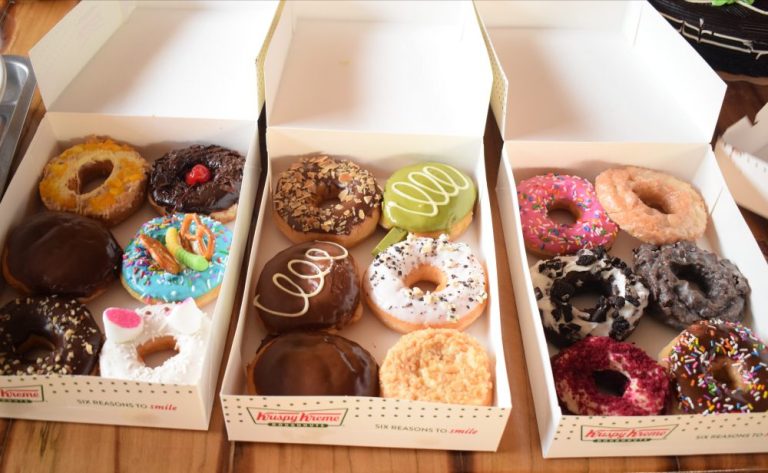
Consumers may be cutting spending, but Krispy Kreme sees them still springing for special occasions.
One might expect that, given the non-necessity of sweet treats such as doughnuts, the bakeshop brand would suffer from consumers’ mid-inflation belt-tightening behavior, but as the chain noted on a call with analysts Wednesday (Feb. 15) discussing its fourth quarter 2022 financial results, this is not the case. Rather, because the bulk of the brand’s business comes from special occasions instead of habitual, frequent purchasing, it is protected from these kinds of cutbacks.
“Our business model [is] dozens, gifting, sharing. It’s not a high-frequency model, and we [see] people continuing to buy our brand and our dozens to gift to someone else,” Krispy Kreme president and CEO Mike Tattersfield said.
Certainly, consumers are cutting back on their day-to-day food spending. Data from PYMNTS’ study “Consumer Inflation Sentiment: Perception Is Reality,” which drew from a survey of more than 2,100 U.S. adults, revealed that 69% of consumers had made changes to their grocery shopping lists in the last year in response to rising prices. Fifty-nine percent have reduced the quantities of items they are purchasing, and 35% have reduced the quality.
Plus, they are also reining in their restaurant spending. The report “The 2022 Restaurant Digital Divide: Restaurant Customers React To Rising Costs, Declining Service,” for which PYMNTS surveyed more than 2,300 U.S. restaurant customers in November, reveals that anywhere from 67% to 88% of diners, depending on generation, report having made changes to their restaurant spending in response to inflation. The most popular change cited was purchasing from restaurants less often. A handful of consumers have also been picking cheaper menu items and decreasing the amount of food per order.
Yet some food brands that sell relatively low-priced indulgences benefit from changes in consumer habits relative to inflation, providing an affordable way for customers to comfort themselves during a stressful time.
“The affordable indulgent piece is a clear driver, which is really helps all of our consumers base [be] resilient,” Tattersfield said.
Kripsy Kreme is not the only brand noticing this effect. For instance, snack and confectionery giant Hershey observed in prepared remarks accompanying its most recent earnings report that consumers have been turning to chocolate for everything “from rewarding moments to stress relief to self-care, and everything in between,” per the company’s CEO Michele Buck. Consequently, rather than consumers cutting back on their sweets spending, chocolate sales have been on the rise.
Similarly, The Kellogg Company, parent of its eponymous brand as well as a range of other popular food brands, including Pringles, Cheez-It, Pop-Tarts and more, is seeing sales its indulgent snacks generate double-digit growth.
Krispy Kreme, for its part, is not arguing that inflation has led to an increase in demand (despite seeing revenue growth) but rather that its customers’ habits have remained relatively constant despite the changing economic environment.
“The evidence so far would say that there’s no change in our consumers’ behavior,” chief operating officer Josh Charlesworth said.